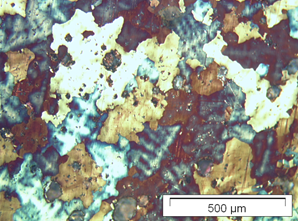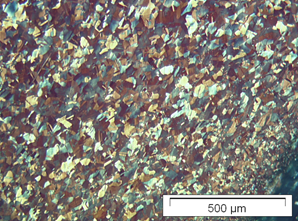Studying sword structure reveals more about our predecessors than just their craftsmanship skills. A study, continuing from a preliminary project and published in Journal of Archaeological Science: Reports, used neutron diffraction to assess the microstructure in different areas of eight Bronze Age swords. Using this information, researchers were able to infer when combat shifted from primarily stabbing to cut-and-thrust, and the subsequent knock-on effects on societal functioning.
Frequently used areas of a blade are made to be harder to withstand the blows of combat. Metalsmiths manufactured swords dependent on their intended use, but this required great skill. There were no thermometers in BCE to indicate when to temper metal, nor machinery to ensure weapons were of a uniform shape.
Marianne Mödlinger, from the Università degli Studi di Genova, and her collaborators from across Europe, used X-ray fluorescence spectroscopy and metallographic analyses on samples taken from four swords. These techniques allowed the team to identify the chemical composition and presence and amount of cold deformation - a technique used to harden metal by changing its shape without heat and permanently altering the crystalline structure - in a selected area of the sword blade. As this is an invasive procedure, sampling is usually limited to one sample per object, or none at all. The scientists did not cut samples from the other four swords but a team led by Prof. H. Postma (Delft, NL) performed neutron resonance capture analysis at the time-of-flight GELINA facility in Geel, Belgium.
Neutron diffraction was used for structure analysis on all eight blades. Neutron diffraction using GEM at ISIS was ideal to investigate the crystallographic microstructures - altered more than 3000 years ago by the ancient smiths - on multiple points on the blades and without causing damage.
Researchers calculated the tin content of the swords by measuring the distortion of the copper lattice, which is affected by alloying and impurity elements. The swords contain between 7 and 13 wt% of tin as the only major alloying element. More importantly, the diffraction analysis revealed the microscopic distribution (or level of segregation) of tin. This acts as a measure of the degree of homogenization and directly correlates with cold deformation and hardness of that part of the blade.
Achtkant-type swords were previously believed to be made for stabbing. Two Achtkant-type swords studied were primarily homogenized on the tip, confirming this belief. However, the third sword of the same type showed upper blade homogenization, suggesting that early (pre-1200 BCE) swords were prepared to also serve as a cut-and-thrust weapon. Also, two Riegsee-type swords, until now thought to be the most recent purely stabbing weapon sword type in Central and Eastern Europe, show a high level of work-hardening on the upper parts of the blades compared to the tip of the blades, which indicates use as a primarily slashing weapon.


The microstructures of an Achtkant-type sword in the core area (left) compared to the tip (right) of the blade.
A similar contradiction to previous literature was found with a Dreiwulst-type sword. Originally thought to be the first cut-and-thrust metal-hilted weapon, one Dreiwulst-type showed also high tip homogenization, which suggests an additional usage as a stabbing weapon.
Both the data from this study and previous research suggests the transition from stabbing to cut-and-thrust combat may have been a gradual process. Neutron diffraction remains a vital tool for analysing archaeological artefacts to continue to build a clearer picture of the lives – and deaths – of our Bronze-Age ancestors.
